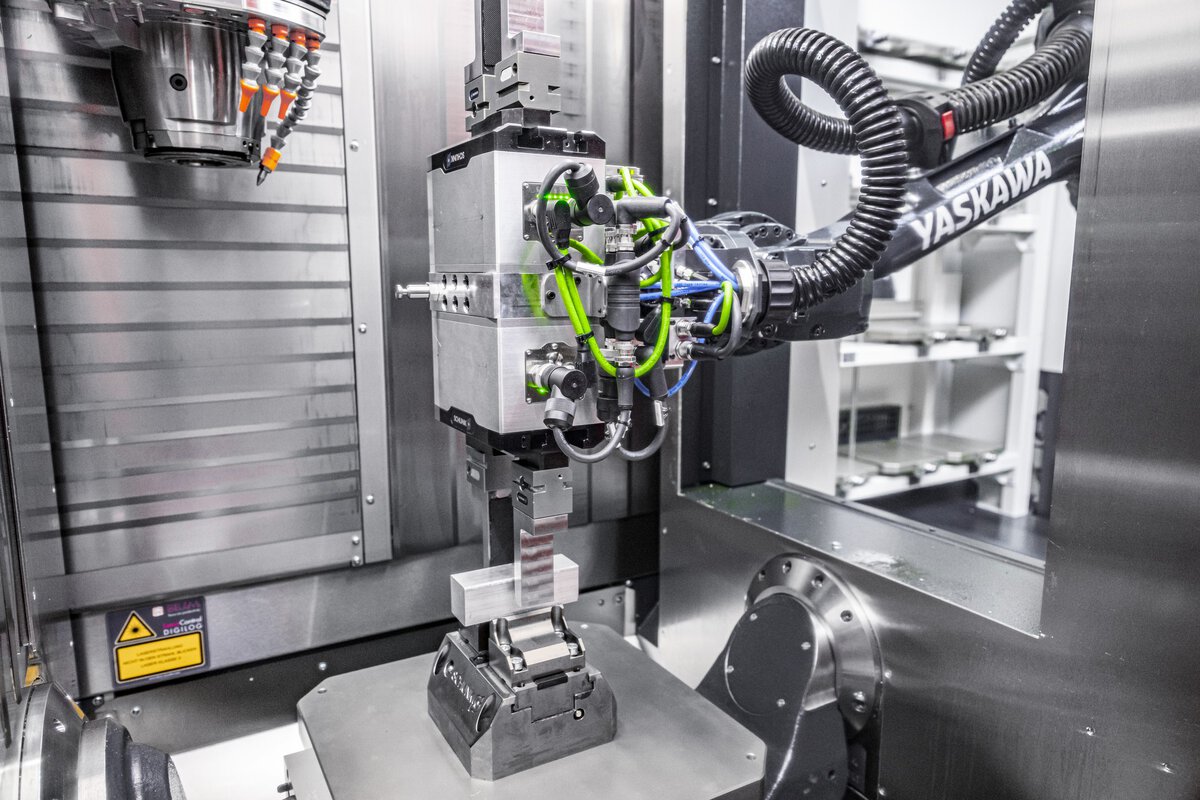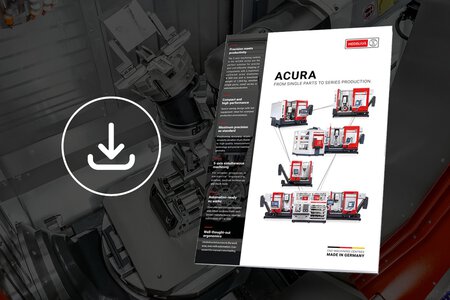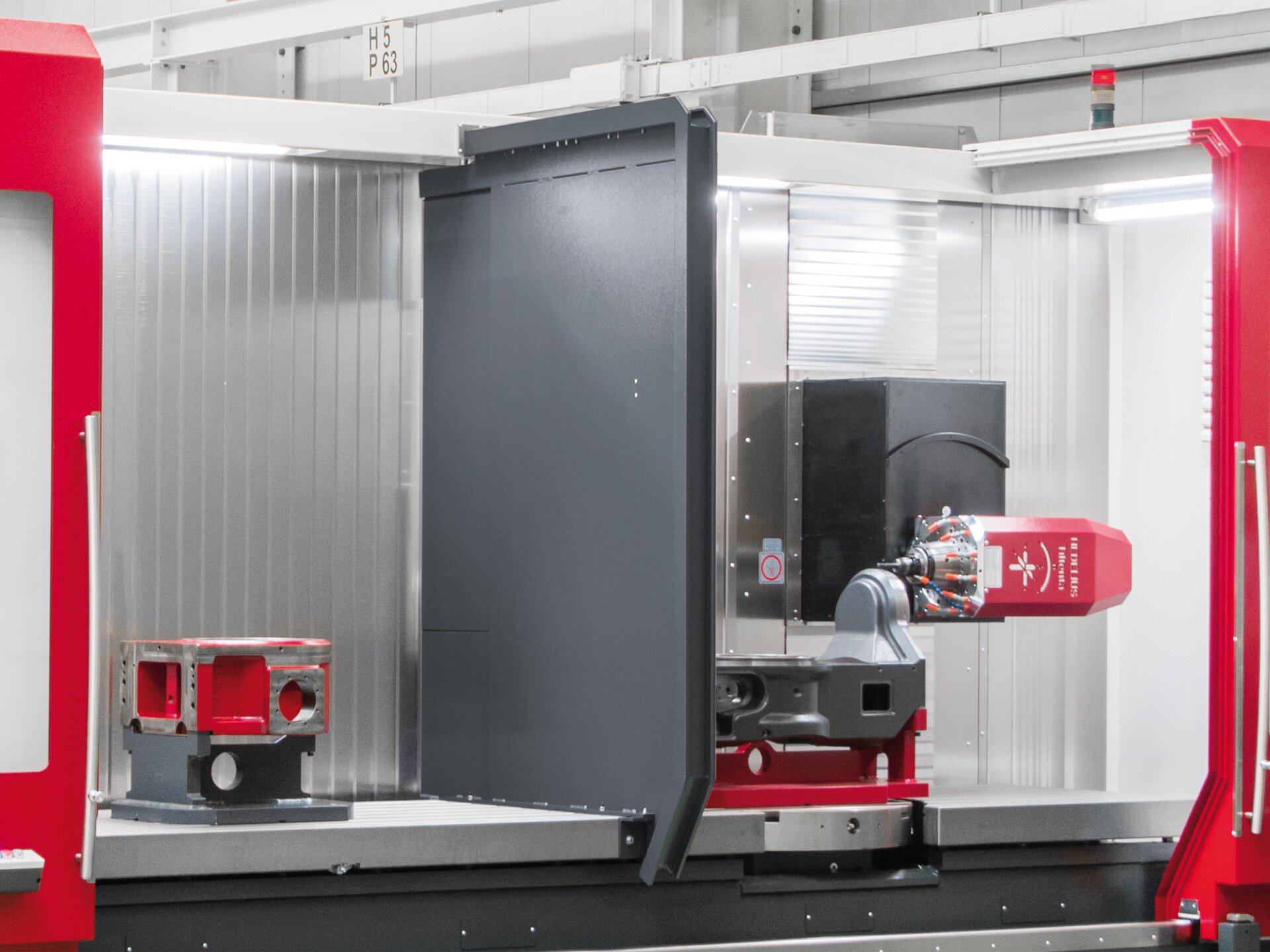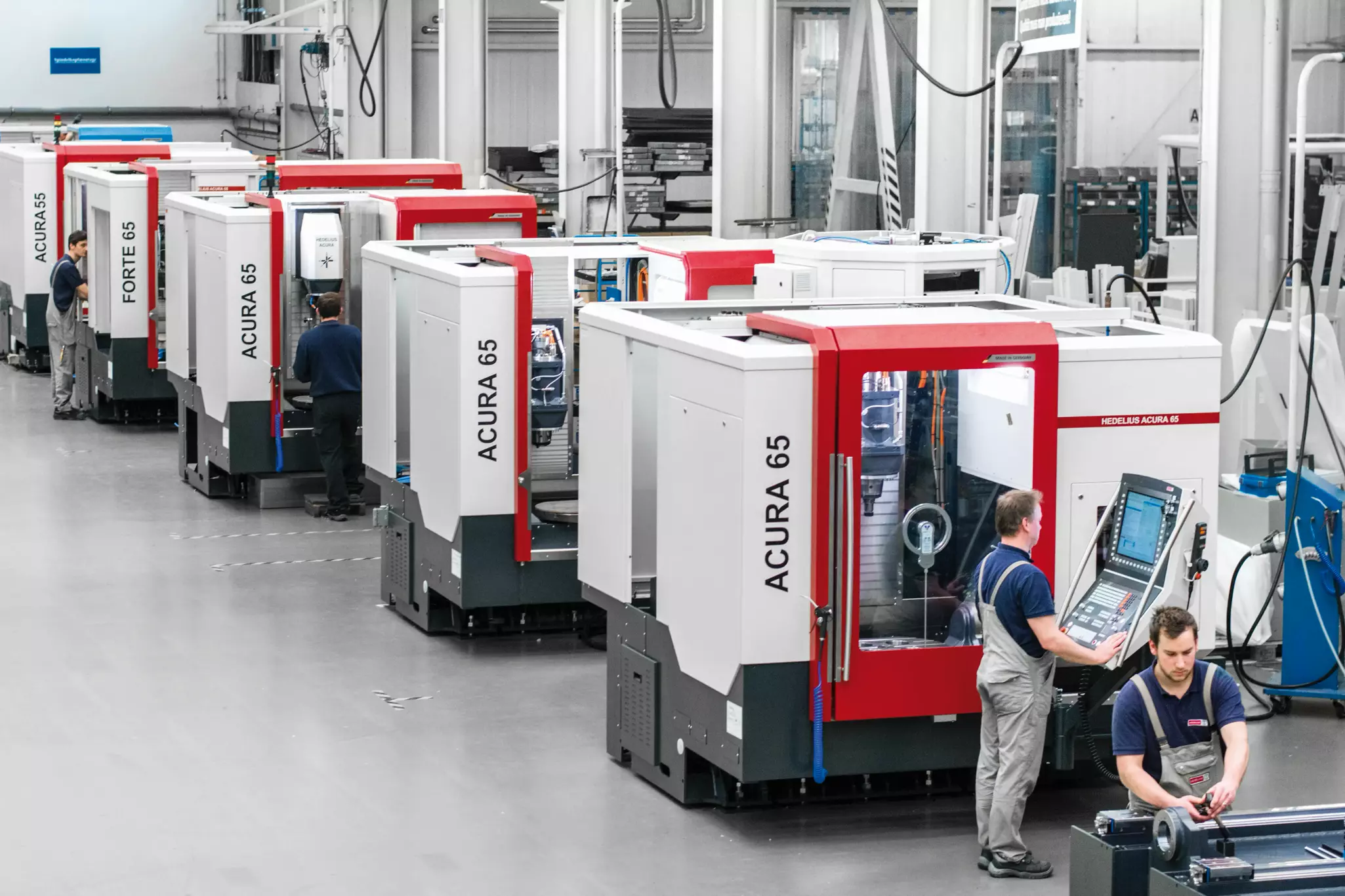15 November 2024
Productivity and flexibility.
Automation ensures a competitive advantage.
Advancing automation has long since arrived in mechanical engineering and contract manufacturing - but many companies still face challenges, especially when it comes to small batch sizes. While large-scale production is already largely automated today, flexibility in smaller quantities, which are often the order of the day in contract manufacturing, poses a particular challenge. How can automation be made to pay off here too without presenting machine operators with insurmountable hurdles?
It is not only the technical implementation that is decisive for success in the day-to-day production of small and medium-sized enterprises (SMEs), but above all the involvement of the people who work with the machines on a daily basis. Intuitive operating concepts, simple programming and a smooth transition between manual and automated production - these are all decisive factors in increasing the acceptance of automation solutions and enabling economical production even with small batch sizes.
Uncomplicated operating
Moritz Sammer is an operator at an ACURA 65 MARATHON from HEDELIUS Maschinenfabrik GmbH in Meppen, Emsland. He raves about the uncomplicated operating of the automated machining centre and the fact that "the components are brought into the machining process from several pallets. Clamp them once and the ACURA 65 does the rest virtually automatically." Sammer is one of 120 employees at BL Lasertechnik GmbH in Neuschönau, Bavaria. The ACURA 65, a compact 5-axis machining centre with rotating/swivelling table, is connected to a MARATHON pallet automation system of the type PL406, also from HEDELIUS. This means that the machine and automation are perfectly coordinated: Automated loading of the machining centre with the pallets takes place via a side opening, leaving the work area accessible from the front and for crane loading for single part production, e.g. during the day shift. The consistent Heidenhain operating concept on the machine and automation ensures convenient, simple operating. The zero-point clamping systems Schunk Vero NSA installed at the factory save valuable tooling times for each part.

The MARATHON RZ430 hybrid automation system can handle both workpieces and ...

... Load pallets into the CNC machining centre.
"Flexibility is a very big factor"
"We are very broadly installed in terms of our customer base, whether single parts or series production. In addition to milling, edging and welding, we also offer powder coating," says Maximilian Scharringer, Technical Manager at BL Lasertechnik. "Flexibility is a very big factor for us." Scharringer knows his employees well. It is very important to him that they are satisfied. This includes the entire working environment. "If the machine, if the operating functions smoothly, then that's half the battle."
It is also important to the machine manufacturer from Meppen in Lower Saxony that not only the entrepreneur but also the operator enjoys his machine. The latest innovation from HEDELIUS is another impressive example of how productivity, flexibility, quality and user-friendliness go hand in hand in machine design. We are talking about the robot cell MARATHON RZ430, connected to one or two ACURA 5-axis machining centres.
Mixed pallet and workpiece handling
The system intelligently combines pallet and workpiece loading in a CNC automation system, making it even more flexible and productive in small and medium batch production - even with very high variance in the number, weight and geometry of parts. A YASKAWA 6-axis robot with servo-controlled double gripper loads up to two machining centres from the side. By loading the ACURA machines from the side, the work areas remain fully accessible, e.g. for single part production during the day shift.
The robot cell impresses with a load capacity of 88 kg (optionally 110 kg) and a capacity of 30 pallet locations each 400 x 400 mm and 5 product drawers with workpiece grids. Two 360° rotatable storage/retrieval stations enable main time-parallel tooling. Operating the MARATHON RZ430 robot cell is extremely simple and requires no robot programming knowledge - not least thanks to the MultiBatch OS user interface developed by HEDELIUS with order management software, tool preview and e-mail module.

Operating the MARATHON RZ430 robot cell is extremely simple, ....

... not least thanks to the MultiBatch OS user interface developed by HEDELIUS with order management, tool preview and e-mail module..
"The best solution for everyday production"
The automation solutions from HEDELIUS range from super-compact 5-axis machining centres with automatic pallet changers to linear interlinking with robot cells for workpiece and pallet automation, as described above. HEDELIUS relies on automation with its own systems from the MARATHON series as well as on the connection of systems from BMO, Indunorm, RoboJob and other manufacturers via an open interface. "Our goal is to offer customers the best solution for their day-to-day production," says HEDELIUS Managing Director Dennis Hempelmann. "Because one thing can no longer be ignored: The benefits of automation are very welcome by our customers in order to realise flexible and at the same time productive manufacturing scenarios with batch sizes from 1 to 500."
Highest possible machining output
"Numerous customers report productivity increases of 50% and more thanks to the use of pallet magazines in conjunction with large tool changers and the precise 5-axis technology of our compact ACURA series," says Hempelmann. "But supplier companies in particular often ask us to have larger single parts, panels or welded assemblies produced by skilled workers in the day shift, so that they can then quickly switch back to an automated operation and utilise the full capacity of the machining centre." What could be more obvious than combining the versatility of a universal swivelling spindle machining centre such as the TILTENTA with the productivity of pallet automation from the compact ACURA series?
HEDELIUS automates TILTENTA series
The result is the new TILTENTA 7-2000 NEO from HEDELIUS, equipped with a 15-station MARATHON SR415 pallet magazine. The TILTENTA series is known for its flexibility, reliability and cutting performance. The TILTENTA 7-2000 NEO offers generous travel paths of 2000 mm in the X-axis, 700 mm in the Y-axis and 735 mm in the Z-axis. The pallet magazine has 15 pallet locations for components up to 700 mm in diameter and 500 mm clamping height. The storage/retrieval station can also be rotated here, e.g. for ergonomic tooling of clamping towers or clamping pyramids. For full flexibility, the MARATHON SR415 loads the TILTENTA 7 fully automatically from the left-hand side of the machine.
Automation will be indispensable in future
Automation is a decisive factor in today's manufacturing industry, also and especially for small and medium-sized enterprises (SMEs) with batch sizes of 1 to 500. One of the main reasons for this is the increase in efficiency and productivity. The use of automated processes can reduce lead times, minimise errors and increase quality. Especially with variable batch sizes, automation enables flexible adjustment to customer requirements, which gives SMEs a competitive advantage in a highly competitive market.
Source: fertigung 06/2024

Advantages of HEDELIUS machining solutions.
Easily automated high-performance machining centres
More spindle hours, lower unit costs thanks to automation
Compact solutions for tight spaces
Easy operating, without robot programming knowledge
Automatic loading from the side for maximum flexibility (quick changeover to single part production)
Customised automation solutions both with our own systems and with systems from other manufacturers
Twinner solution from HEDELIUS.
More news.

We will be on company holidays from 24 December 2025 to 2 January 2026. Please note that our customer service and sales department will only be available to a limited extent during this period. We will process your enquiries as soon as possible after our return. Further information on contact options and the availability of our customer service and sales team can be found here.

(PDF | EN) Automate your HEDELIUS machining centre with the innovative RoboJob systems and increase your productivity around the clock. Whether small series, medium quantities or unmanned night production: with the Mill-Assist and Tower systems, you can work more economically, reduce downtimes and ensure the long-term competitiveness of your production. Download the free "RoboJob automation for HEDELIUS" folder now and find out how you can upgrade your machining centre to a smart automation solution in just a few steps.

Our HEDELIUS in-house exhibition on 14 and 15 May 2025 was a complete success - and we owe this above all to you! A big thank you to the numerous visitors, but of course also to our dedicated employees and our strong partners. The personal exchange with our guests, inspiring conversations and new impulses made the two days in our technology centre a real highlight.
Take a look back at this successful event with our event video and the impressions in pictures!











































































































































